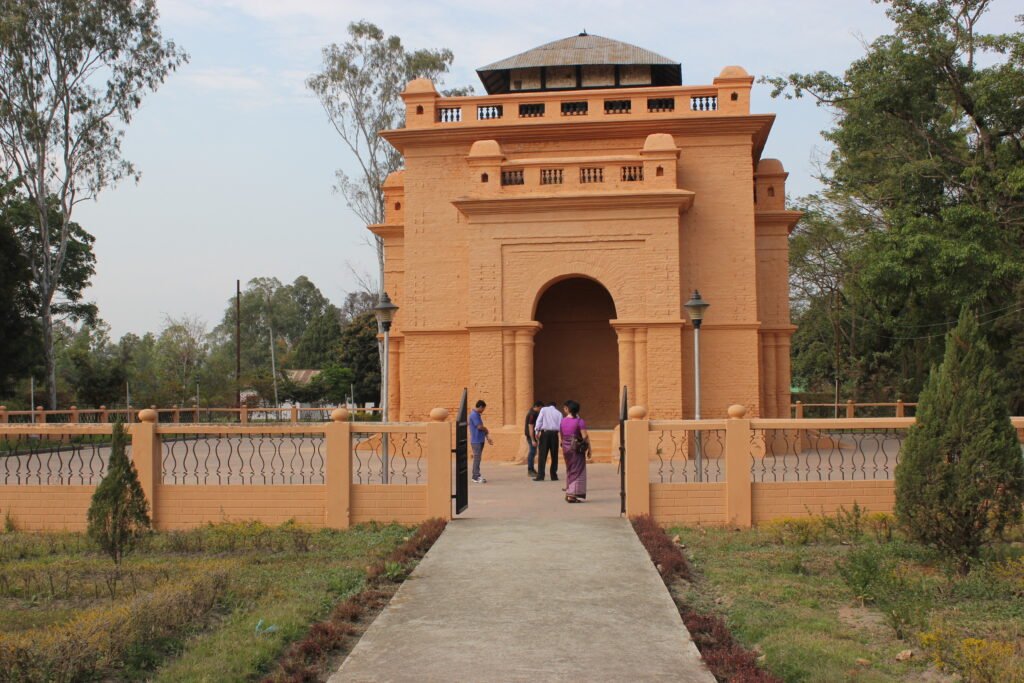Kangla Fort, nestled in the vibrant heart of Imphal, Manipur, stands as a living testament to two millennia of royal legacy, resilience, and cultural pride. This ancient citadel is more than a structure, it’s the spiritual and political soul of the Meitei people, immortalizing their myths, sovereignty, and enduring spirit for generations. Whether drawn by its storied ruins, sacred temples, or the allure of its festivals, every step within Kangla’s walls connects visitors to the heartbeat of Northeast India.
Key Details:
History: The Rise and Evolution of Kangla Fort
The origins of Kangla Fort trace back over 2,000 years, making it one of the oldest royal seats in India. Founded by the divine king Nongda Lairen Pakhangba around 33 AD, Kangla (“dry land” in old Meitei) became the heart of the Kangleipak kingdom. Successive rulers, including King Khagemba and King Garibaniwaj, fortified the fortress and expanded its grandeur, blending stone walls, sacred temples, and royal palace grounds.
After centuries serving as the nerve center of Manipuri rule, Kangla Fort fell to the British following the Anglo-Manipur War of 1891, marking a turning point in regional history. Post-independence, the site was used by military authorities until it was restored to the people and opened as a heritage site in 2004.
Cultural Significance and Traditions
Kangla Fort is revered as a spiritual epicenter and a symbol of Manipuri identity. Here, legends of the Meitei mythological serpent-dragon, Lord Pakhangba, echo in temple rituals and public celebrations. The complex hosts traditional coronations, religious ceremonies, indigenous crafts fairs, and vibrant cultural festivals, preserving the living heritage of Manipur.
Sacred monuments, such as the imposing Kangla Sha dragon-lion statues at the entrance, and ancient moats alongside serene temples embody spiritual motifs unique to the region. For Meiteis and Manipuris at home and abroad, Kangla is not just a physical landmark; it is the cradle of ancestral customs, oral history, and community resilience.
Tourist Attractions at Kangla Fort
Today, Kangla Fort is a thriving tourism hub, recognized for its architectural heritage, spiritual ambiance, and educational value.
Key attractions include:
- Kangla Museum: Home to royal artifacts, cultural exhibits, and manuscripts.
- Kangla Sha Statues: Mythical dragon-lions serving as protectors of the realm.
- Ibudhou Pakhangba Temple: A revered site for Meitei rituals and mythology.
- Ruins of the Royal Palace: Step into history with preserved gates, courtyards, and moats.
- Shree Govindajee Temple: A nearby pilgrimage site known for exquisite architecture.
- Manipur State Archaeological Museum: Adjacent to the fort, ideal for those keen on local history.
A visitor center provides information, local guides offer historical walks, and eco-friendly golf carts allow easy exploration for all ages. Kangla Fort is not just a monument; it is an immersive journey into the living legacy of Manipur.

Location and How to Reach Kangla Fort
Kangla Fort is strategically located in the center of Imphal on the banks of the Imphal River, making it accessible from all parts of the city.
Getting There:
- By Air: Imphal’s Bir Tikendrajit International Airport connects directly to major Indian cities and is about 7 km from the fort.
- By Rail: The nearest major railway station is Dimapur (Nagaland), from where visitors can take taxis or buses to Imphal.
- By Road: Imphal is accessible via NH-37 (Imphal-Jiribam), NH-2 (Imphal-Dimapur), and NH-102 (Imphal-Moreh).
Kangla Fort’s central location allows for easy exploration of other landmarks in Imphal, such as Loktak Lake, Ima Keithel Market, and more.
Practical Information for Visitors
- Timings: 9:00 AM to 5:00 PM.
- Entry Fees: ₹20 for Indian nationals, ₹100 for foreign nationals; children below 12 enter free.
- Best Time to Visit: October to March for pleasant weather and festivals, though summers are mild and also suitable.
- Facilities: Guided tours, golf carts, photography points, and eco-conservation efforts are available within the fort area.
Economic Impact & Revenue
Kangla Fort has become one of Manipur’s most visited destinations, attracting thousands of tourists each month, especially during peak festival seasons. In recent years, government initiatives have focused on infrastructure upgrades, eco-friendly tourism, and digital heritage experiences such as virtual and augmented reality tours. Revenue from entry fees, events, and cultural tourism has been reinvested in preservation and maintenance as per the sanctioned funds from the Government of India.
FAQs About Kangla Fort
What is the historical importance of Kangla Fort?
Kangla Fort served as the seat of the Meitei rulers for more than 2,000 years, witnessing key royal events, conquests, and the dramatic Anglo-Manipur War of 1891.
Why is Kangla Fort sacred to the people of Manipur?
The fort houses temples dedicated to Lord Pakhangba and other deities, and is central to Manipuri mythology, culture, and community rituals.
What are the main attractions inside Kangla Fort for tourists?
Visitors can enjoy museum collections, the Kangla Sha statues, historic palace ruins, ancient temples, and beautiful moats, all set in tranquil gardens.
How can tourists reach Kangla Fort from within and outside Manipur?
The fort is in downtown Imphal, accessible by air (Imphal Airport), road (NH-2, NH-37, NH-102), and rail (nearest major station at Dimapur, Nagaland).
When is the best time to visit Kangla Fort?
October to March is ideal for mild weather and colourful cultural events, though late spring is also a favorable period.
What is the entry fee and timing for Kangla Fort?
Indian nationals: ₹20; foreign nationals: ₹100. Open from 9:00 AM to 5:00 PM; children below 12 years are free.
How is Kangla Fort maintained and funded today?
The Government of India funds regular conservation and cultural activities, with annual revenue from ticket sales and tourism supporting ongoing maintenance.
Are there guided tours or events at Kangla Fort?
Yes, guided tours, sometimes by golf cart, offer insights into the fort’s history, culture, and legendary sites, especially during festivals or significant commemorative days.